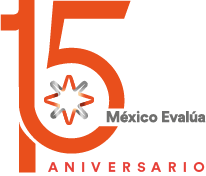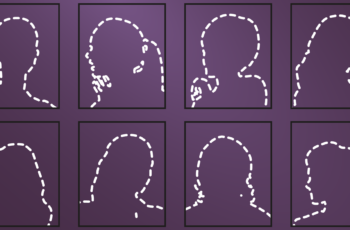The Labyrinth of Data regarding Violence Against Women and Girls: Is there a Way Out?
Paulina Covarrubias (@paulinacova_)| nexos
Within government institutions, data is used (or should be used) to design evidence-based public policies and measure their effectiveness. When discussing Violence Against Women and Girls (VAWG), quality statistics are especially important as they help to improve strategies to tackle the crisis of violence that is resulting in the disappearance of 7 women and the murder of 11 women every single day[1].
From México Evalúa, we have been promoting the generation of statistical knowledge that goes beyond merely counting the number of cases of violence, and we have used this idea as the basis for a study undertaken in Ciudad Juárez and Chihuahua[2], in which we researched the generation of data surrounding VAWG. Our general findings were not particularly encouraging.
Data is generated using heterogenous primary materials of varying degrees of quality, leading to a complex labyrinth, which increasingly revictimizes and is incapable of achieving inter-institutional coordination. As a result, we have hard-to-find, poor-quality and impossible-to-access data. This problem is exacerbated when, in addition to the thousands of cases of violence reported, the information is being accumulated in filing cabinets instead of being leveraged to create public policies that tackle violence against women and girls.
We offer an overview of this labyrinth, and we propose ideas about how, from a grassroots perspective, we can light the way for this data and leverage the information shared by those reporting this violence.
Administrative Records as the Key to Finding the Way Out of the Labyrinth
There are currently three major public sources that produce information regarding VAWG:
First, investigation files compiled by the Executive Committee of the National Public Security System (SESNSP), which are merely the “tip of the iceberg” of reported crimes that are brought before the courts. Through these files, we know that, for example, in 2021, a total of 69,516 reports of crimes against sexual security and liberty[3] were filed. Secondly, specialized and victimization surveys from the National Institute of Geography and Statistics (INEGI), which include information regarding the perception of security and unreported crimes, i.e., a large part of the submerged section of the iceberg. Analyzing this data, we calculate that the dark figure for sexual violence in 2021 reached 99.7%[4]. A tragedy.
And, finally, administrative records that compile data from any VAWG case that reaches a local institution, for example a Women’s Institute, a Public Prosecutor’s Office (Ministerio Público – MP) or a court. Unlike the other two sources, these capture violence before they are brought to the courts, or become a criminal matter. This means that they allow us to detect violence that is not yet part of the “crime iceberg”, and they can also be replicated and scaled up. These records are significant strategic sources of information to help consolidate VAWG prevention policies in Mexico.
In 2010, the State created the National Database on Violence Against Women (BANAVIM)[5] to make use of the data involving VAWG contained in administrative records and compile it within a national database. This database aims to standardize and organize this information in order to ensure that any authority tasked with supporting women who suffers violence – such as the Women’s Institute, MP or courts – reports the details of the case on this platform.
Given that it is based on administrative records, BANAVIM offers us an opportunity to monitor cases and develop specific and opportune measures to prevent violence occurring or escalating. However, the reality is much less optimistic than the theory.
By ignoring the reality facing local authorities since it was created, BANAVIM has not achieved its objective. In addition to being seen as a tedious administrative task, it has missed the opportunity of taking advantage of the information contained in these records to address VAWG.
In addition to a lack of institutional consolidation[6] and sub-par dissemination of its statistics[7] , BANAVIM has a core operating flaw: it follows an extractivist model that ignores the local and state authorities that feed it with data.
Its top-down model presents an obstacle to compiling and analyzing data, making it inadequate given that the operability of the database is, in reality, the complete opposite. First, it omits data. While its platform aims to standardize case variables, many fields remain empty because the authorities do not have the faculties to complete this information[8]. Second, double entries are made. For each file, the authorities use their own formats (which are ad hoc for their individual needs), and they then have to re-enter this data into the BANAVIM platform, which leads to time being wasted and a lack of data reliability and follow-up. Finally, the data is entered but not analyzed. The database does not allow those entering data to access systemized information from the files, cross-check data or share information in order to observe patterns of criminal behavior.
So, instead of offering a solution to bureaucratic red tape, this national mandate, which is completely disconnected from local experiences, has become just another labyrinth.
Escaping the Labyrinth: a Local Compass
With the support of the Canada Fund for Local Initiatives (FCIL) and government officials in Chihuahua and Ciudad Juárez, we compiled and analyzed the experiences of those who, in addition to providing support to dozens of women or children who are the victims of violence every single day, also feed the database. Based on their stories, we propose two paths to help reappropriate the national mandate and drive the production of quality data within local and state authorities:
- Creating a minimum standard for comparable and standardized data that is based on the variables proposed by the BANAVIM platform. These criteria include age, type of violence, and the relationship between the victim and the aggressor. These will help generate statistical analysis that exceeds merely counting the number of women supported and the cases that are resolved.
- Leveraging the “Unique Victim Record”. This record is generated automatically when inputting a new case in BANAVIM, providing a series of numbers to identify the case, file, state, authority working on the case, and whether or not the violence is a repeat offence. Expanding its use out with the platform would enable it to trace the cases among the different authorities, avoid revictimization of the women when they visit one or more authorities, and safeguard their confidentiality and protect their data.
Our proposals aim to articulate the data and generate grassroots solutions, proposing a change from extractivist mandates to collaborative strategies that offer concrete benefits. Despite the fact that, up until now, BANAVIM has generated no value for its users, it can promote better support and prevention policies.
The Mexican State owes women
and girls a series of amendments and support measures, including valuing the
contributions of those who file complaints and place their trust in these institutions
to ensure that their experience is guaranteed not to be a repeat of that of
other women and girls. The information shared with the institutions contains
clues to help find the 9,079 girls and 12,459 women who have
been disappeared[9] and help
prevent violence from becoming lethal. Ignoring these clues means not only that
the stories of these victims will continue to be lost within this bureaucratic
labyrinth, but also that women and girls who could be taken out of cycles of violence
continue to be forgotten and made susceptible to violence, disappearance, or
murder.
[1] According to data from the Weekly Report published by the National Search Commission (2021) and UN Women (2021), respectively.
[2] All projects within our gender and security agenda can be consulted at: https://www.mexicoevalua.org/feminismo-de-datos/
[3] According to cumulative data from the SESNSP for 2021. These crimes include sexual abuse, sexual assault, harassment, rape, equivalent of rape, incest and other crimes that impinge upon sexual security and liberty.
[4] This figure was calculated by comparing investigation files from SESNSP and data from the National Urban Security Survey – https://www.mexicoevalua.org/crece-la-cifra-negra-de-la-violencia-sexual-en-2021-el-99-7-de-los-casos-no-se-denunciaron/
[5] BANAVIM was created as the result of a federal mandate contained within the General Law for Women’s Access to a Life Free from Violence (Article 17, Section 3).
[6] Since it began operating, BANAVIM has fallen under the auspices of the Ministry of Public Security, the Ministry of State and, since 2020, the National Commission to Prevent and Eradicate Violence Against Women (CONAVIM).
[7] According to the General Law for Women’s Access to a Life Free from Violence, the database must publish a report of all the information it has compiled every six months; however, its platform is updated on an annual basis and no reports or analysis containing disaggregated data are published.
[8] The type of variables captured by BANAVIM’s nine modules are available via its User Manual at https://icmujeres.org/bacolvim/Manual%20de%20Usuario%202020.pdf.
[9] According to the National Registry for Missing Persons with data from 1964 to April 25, 2022.









